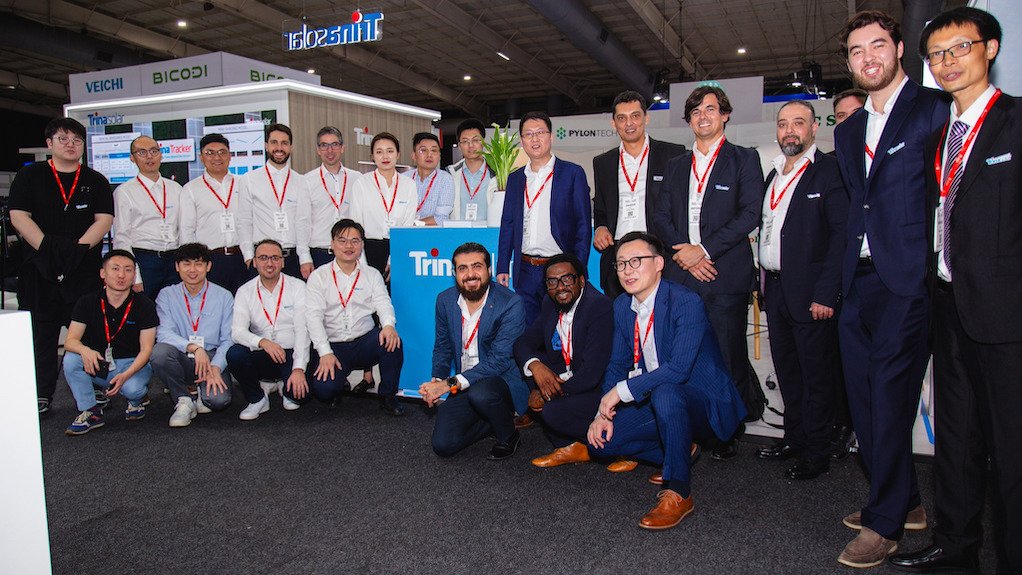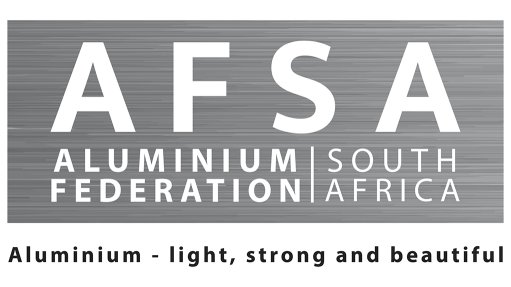Trina Solar one-stop shop for Africa’s solar power needs
With offices in Southern, West and East Africa, global leader in smart photovoltaic (PV) and energy storage solutions Trina Solar hopes to transform the African energy landscape by allowing its customers to leapfrog the fossil fuel-powered energy solutions they currently rely on by advancing renewable energy penetration on the continent.
The company showcased its suit of vertically integrated solutions at Africa’s largest renewable energy exhibition Solar & Storage Live Africa, which took place at the Gallagher Convention Centre, in Johannesburg, from March 18 to 20.
“We focused on our solar modules, utility-scale energy storage solutions and our tracker solution – a mounting system that tracks the sun to deliver optimal solar power generation. By providing a comprehensive portfolio of solutions, Tina Solar provides a one-stop-shop solution for African customers’ energy needs,” says Trina Solar Southern Africa regional director Zaheer Khan.
He highlights that the industry continues to move away from p-type technology towards new n-type technology, such as the advanced n-type i-TOPCon technology incorporated into Trina Solar’s Vertex N and Vertex S+ modules.
“N-type technology essentially offers four key benefits – higher efficiency; higher reliability and, consequently, a better warranty; improved temperature performance and a greater bifaciality factor,” explains Khan.
Reliability is improved as there is a lower yearly degradation in outputs while temperature performance is enhanced by reducing the voltage drop associated with solar panel operation in hotter environments.
“Africa generally enjoys a warmer climate, so having a panel that doesn't lose output as much when temperatures increase is ideal,” adds Khan.
Additionally, bifacial panels also increase performance by allowing electricity to be produced from the front and the rear of a panel.
In the solar context, efficiency equates to the amount of energy generated per square metre of panel. While bifacial panels are not new to the industry, Khan says when combined with n-type panels, more solar energy can be generated by the rear of the panel.
“Bifacial n-type panels yield significantly greater energy production while the impact on the cost of production remains nominal, resulting in better levelised cost of electricity,” elaborates Khan.
The benefits of Trina Solar’s n-type solar modules extend to its NEG21C.20 Vertex N 720W series module. Described as the "star of ground-mounted power stations", boasting higher output panels, fewer panels are needed to achieve the same overall output. Fewer panels also require less cabling, fewer adjustments and realise savings on mounting systems.
The NEG21C.20 Vertex N 720W series module is based on the largest wafers commercially available on the market – 210 mm wafers.
Trina Solar is a world leader in 210 mm wafer modules, states Khan, noting that the company supplies more than 50% of the world’s modules of this size.
“Panels above 700 W are extremely uncommon. Ten years ago, the average solar panel was 250 W. Therefore, in terms of power output, there's been a substantial increase in the output of solar panels over the years.”
Energy Storage Aspirations
Trina Solar, which has about 20 GWh of in-house solar cell manufacturing capacity, intends to increase its production capacity to 24 GWh by the second quarter of this year.
“By being able to have a vertically integrated battery manufacturing facility within the company, we can optimise our costs and have greater control over quality and production efficiencies,” advances Khan.
Trina Solar showcased its latest generation energy storage solution Elementa 2 to the African market at Solar & Storage Live Africa.
Elementa 1, the predecessor of Elementa 2, is based on the company’s 280 amp-hour cells, while Elementa 2 is based on its advanced 306 amp-hour cells.
“Our previous generation is based on a 2.2 MWh modular cabinet design and can also be integrated with 306 amp-hour cells. Our current generation is a containerised solution that has almost double the output – 4 MWh (when using 306 amp-hour cells) and 5 MWh (when using 314 amp-hour cells) – per container,” highlights Khan.
He adds that the Elementa 2 containerised units not only offer higher energy density but also improved thermal management.
Through its mass production and economies of scale, Trina Solar can offer a very-high quality-to-cost ratio to the African market, which has previously suffered from the consequences of procuring poor quality products.
“Having a partner such as Trina Solar, provides access to the highest possible quality at the lowest possible cost,” states Khan.
The first PV and energy storage company to go public on the Science and Technology Innovation Board of the Shanghai Stock Exchange, Trina Solar has access to low-cost capital, which enables the company to significantly expand its PV manufacturing capacity in the capital-intensive industry without having to compromise on quality.
Growing African Footprint
Boasting offices in Johannesburg, in South Africa, as well as Kenya, Nigeria and Morrocco, Trina Solar has positioned itself in proximity to its customers to provide them with a better service, including aftermarket support.
To ensure accessibility to its products and spare parts, Trina Solar has five well stocked warehouses in Durban and Cape Town, as well as a distribution facility in Kenya. The company aims to have a physical footprint or presence spanning the entire African continent to offer integrated solutions that allow for the production and storage of energy.
By providing safe, easy-to-implement, high-quality, low-cost solar systems, Trina Solar enables African customers to accelerate their journey to a lower carbon emissions future, states Khan.
Trina Solar is currently approaching 95 GW of total installed capacity globally and is adding to this figure with projects such as the 195 MW Springbok solar PV plant in the Free State.
Article Enquiry
Email Article
Save Article
Feedback
To advertise email advertising@creamermedia.co.za or click here
Comments
Press Office
Announcements
What's On
Subscribe to improve your user experience...
Option 1 (equivalent of R125 a month):
Receive a weekly copy of Creamer Media's Engineering News & Mining Weekly magazine
(print copy for those in South Africa and e-magazine for those outside of South Africa)
Receive daily email newsletters
Access to full search results
Access archive of magazine back copies
Access to Projects in Progress
Access to ONE Research Report of your choice in PDF format
Option 2 (equivalent of R375 a month):
All benefits from Option 1
PLUS
Access to Creamer Media's Research Channel Africa for ALL Research Reports, in PDF format, on various industrial and mining sectors
including Electricity; Water; Energy Transition; Hydrogen; Roads, Rail and Ports; Coal; Gold; Platinum; Battery Metals; etc.
Already a subscriber?
Forgotten your password?
Receive weekly copy of Creamer Media's Engineering News & Mining Weekly magazine (print copy for those in South Africa and e-magazine for those outside of South Africa)
➕
Recieve daily email newsletters
➕
Access to full search results
➕
Access archive of magazine back copies
➕
Access to Projects in Progress
➕
Access to ONE Research Report of your choice in PDF format
RESEARCH CHANNEL AFRICA
R4500 (equivalent of R375 a month)
SUBSCRIBEAll benefits from Option 1
➕
Access to Creamer Media's Research Channel Africa for ALL Research Reports on various industrial and mining sectors, in PDF format, including on:
Electricity
➕
Water
➕
Energy Transition
➕
Hydrogen
➕
Roads, Rail and Ports
➕
Coal
➕
Gold
➕
Platinum
➕
Battery Metals
➕
etc.
Receive all benefits from Option 1 or Option 2 delivered to numerous people at your company
➕
Multiple User names and Passwords for simultaneous log-ins
➕
Intranet integration access to all in your organisation

















